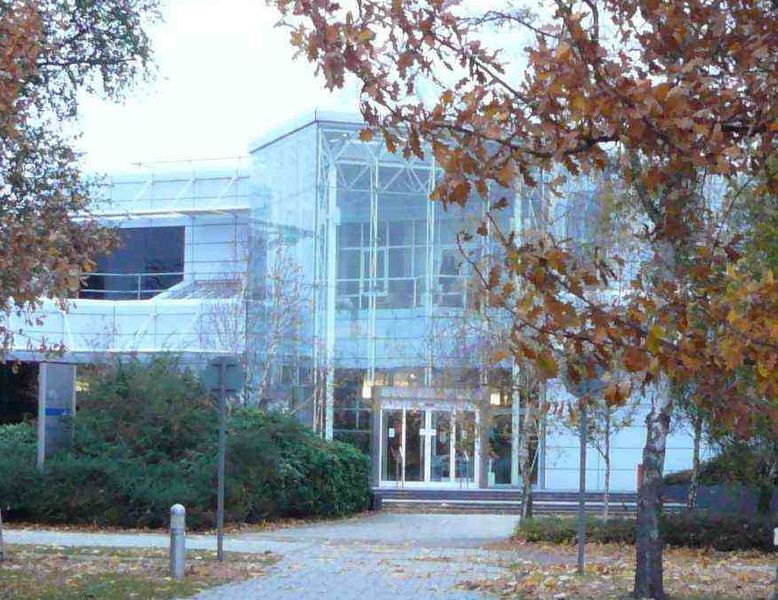UK carrier BT’s Global Research and Development headquarters, Adastral Park, is currently playing host to a field trial of Fibre To The Distribution Point (FTTdp) G.fast technology being run by Chinese infrastructure vendor Huawei.
October 22, 2013

 UK carrier BT’s Global Research and Development headquarters, Adastral Park, is currently playing host to a field trial of Fibre To The Distribution Point (FTTdp) G.fast technology being run by Chinese infrastructure vendor Huawei.
UK carrier BT’s Global Research and Development headquarters, Adastral Park, is currently playing host to a field trial of Fibre To The Distribution Point (FTTdp) G.fast technology being run by Chinese infrastructure vendor Huawei.
Under the trial being carried out in Ipswich, UK, Huawei installed multi-port G.fast equipment in underground distribution points, allowing the last leg of an ultrafast fixed network connection to be carried out over existing copper wire where previously only optical fibre was capable of reaching adequate speeds.
G.fast is a relatively new ITU broadband standard that promises speeds of up to 1Gbps over existing copper telephone wires at distances of up to 250 meters, thereby eliminating the expense of installing fibre between the distribution point and customer’s homes.
G.fast is expected to be deployed by service providers wanting to provide fibre to the home (FTTH)-like services, which will enable flexible upstream and downstream speeds to support bandwidth-intensive applications such as streaming Ultra-HDTV movies, uploading high-resolution video and photo libraries to cloud-based storage, and communicating via HD video.
An important feature of G.fast is that it will enable self-installation by consumers without a technician’s assistance. For service providers, self-install eliminates the expense of deploying technicians to the consumer’s home, thereby also improving the speed at which they can rollout new services. By maximising the potential capacity of existing copper wire infrastructure, successful deployment of G.fast technology could accelerate the rollout of ultrafast broadband in the UK.
Dr Tim Whitley, Managing Director, Research and Innovation at BT, said: “The G.fast trial has the potential to demonstrate how ultrafast bandwidth access may be more efficiently delivered to consumers and businesses. We will be observing the results of the trial with interest to see whether G.fast technology could play a role in ensuring BT has the best network in the short, medium and long term.”
Earlier this year an ITU meeting in Geneva saw first stage approval of ITU standard, Recommendation ITU-T G.9700, that specifies methods to minimize the risk of G.fast equipment interfering with broadcast services such as FM radio, paving the way for G.fast to be approved for commercial deployment in early 2014.
The G.fast standard is being coordinated with the Broadband Forum’s system architecture project, Fibre to the Distribution Point (FTTdp). The ITU and Broadband Forum have been working closely to ensure that G.fast solutions can be quickly placed into FTTdp deployments.
Huawei launched what it claims was the world’s first G.fast prototype in December 2011, showing how the technology uses time division duplexing (TDD) to provide flexible upstream and downstream speed ratios. Huawei claims it can enable 1Gbps ultrafast bandwidth access per twisted pair within a distance of 100 metres, a tenfold speed increase compared with VDSL2 access and can be enhanced to work at distances of up to 250 metres. As typical drop cables in the UK are considerably shorter, optimum performance can be achieved.
Mr. Gao Ji, Huawei Chief Strategy and Marketing Officer Western Europe, said: “Copper wires remain an important resource to telecom carriers and are assets that have yet to be fully exploited. By utilising new copper wire technologies, such as Vectoring and G.fast, carriers can make more efficient use of their resources and quickly implement bandwidth strategies, helping to achieve commercial success.”
About the Author(s)
You May Also Like







.png?width=300&auto=webp&quality=80&disable=upscale)

.png?width=300&auto=webp&quality=80&disable=upscale)
_1.jpg?width=300&auto=webp&quality=80&disable=upscale)



.png?width=800&auto=webp&quality=80&disable=upscale)